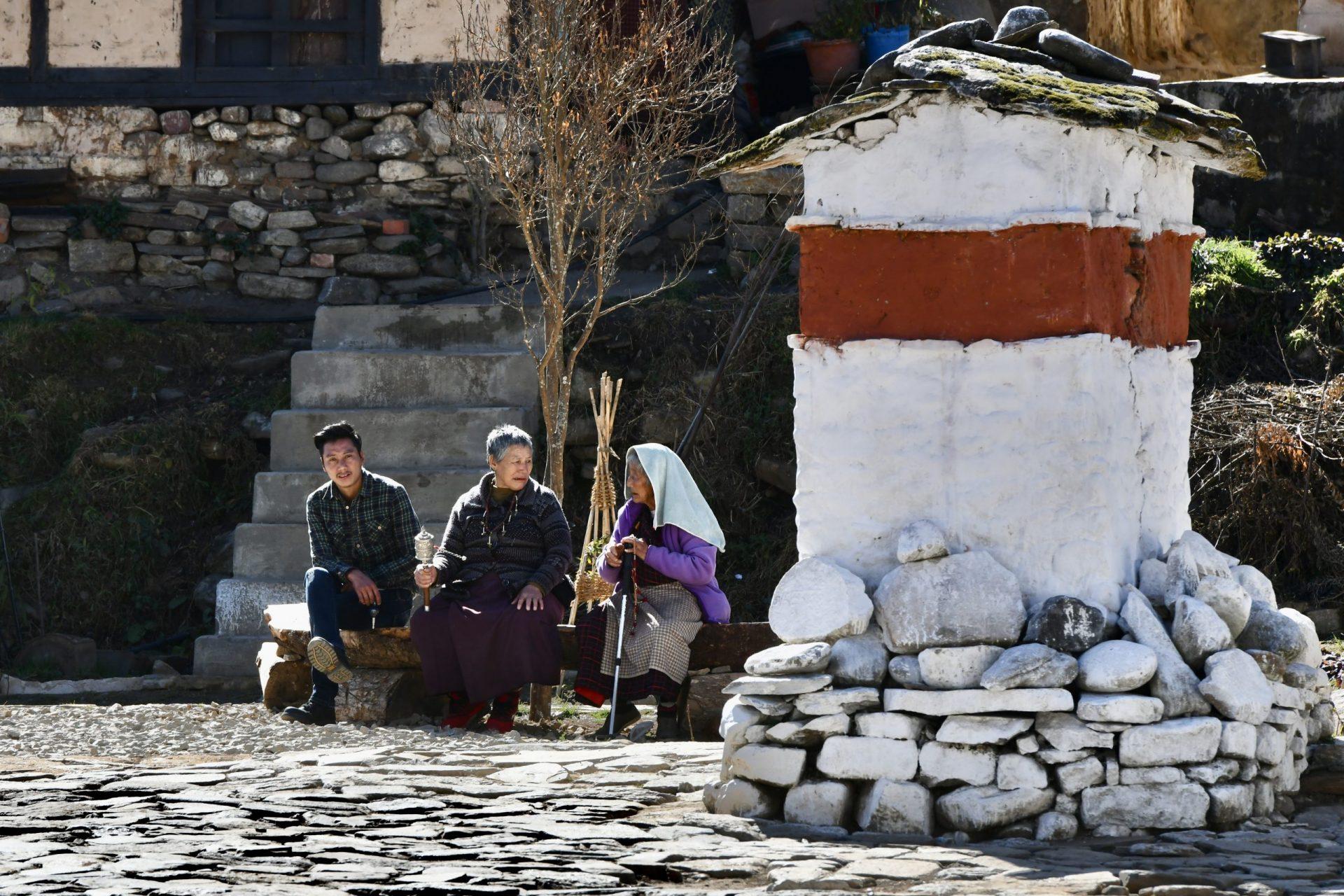Hidden deep in the folds of the great Himalaya mountains, Bhutan is a photographer’s paradise, that lives in close harmony with nature, its identity being largely derived from its religious and cultural heritage. There are hundreds of sacred monasteries, stupas, prayer flags and prayer wheels throughout the country. Freezing a movement, an emotion on a face, a feeling, highlighting an embroidery with its wonderful colors, Bhutan definitively represents one of my greatest experiences and a place you dream of returning to, whenever possible.
Buthan has always relied on bridges to travel across its steep ravines and rushing rivers, Dzongs (fortresses and palaces) are frequently built on a hilltop or mountain or adjacent to important streams, often allocated to administrative and the religious functions, primarily temples and housing for monks.
Many religious festivals (tshechu) are held annually and represent the biggest religious celebrations, gathering many people coming from remote valleys for the occasion, who wear their traditional costumes.
Those typical Buddism festivals celebrate the life and feats of the Master, Guru Rimpoche : dance of the judgment of the dead, dance of the heroes, sword dance, dance of the lords of the cremation ground, black hat dance, dance of the drummers, of the warriers…, are performed at deity invocation, mostly by monks.
They are such a delight of colors, creativity, beauty of the costumes and moreover the the spell of music and prays, not mentionning the fascinitation of the choregraphy.
Monasteries are all over the country and are the center of learning. The ultimate purpose of monastic education is spiritual progress, ending by a three year meditation practice. Number of them often date back to the 17th century and are rich of incredible frescoes.
Lastly, no journey to Buthan without visiting tigers’ nest, legend has it that in the 8th century Guru Padmasambhava flew to the cliff on the back of a tigress and meditated there. This is the most frequented site of Buddhist pilgrimage in the Himalayan Buddhist world and an absolute must. The monastery hangs on a precarious cliff at 3120 m, that you can access by a mule track and end by foot.
This tiny country, homeland of spiritual and emotional happiness, is also rich of its beautiful landscapes and the kindness of its people, its civilization and its traditions.
One clear and strong objective, get closer to the Himalayas and meet again the various tribes living at the foot of these mountains, offering a warm welcome and showing such an ability for happiness.

